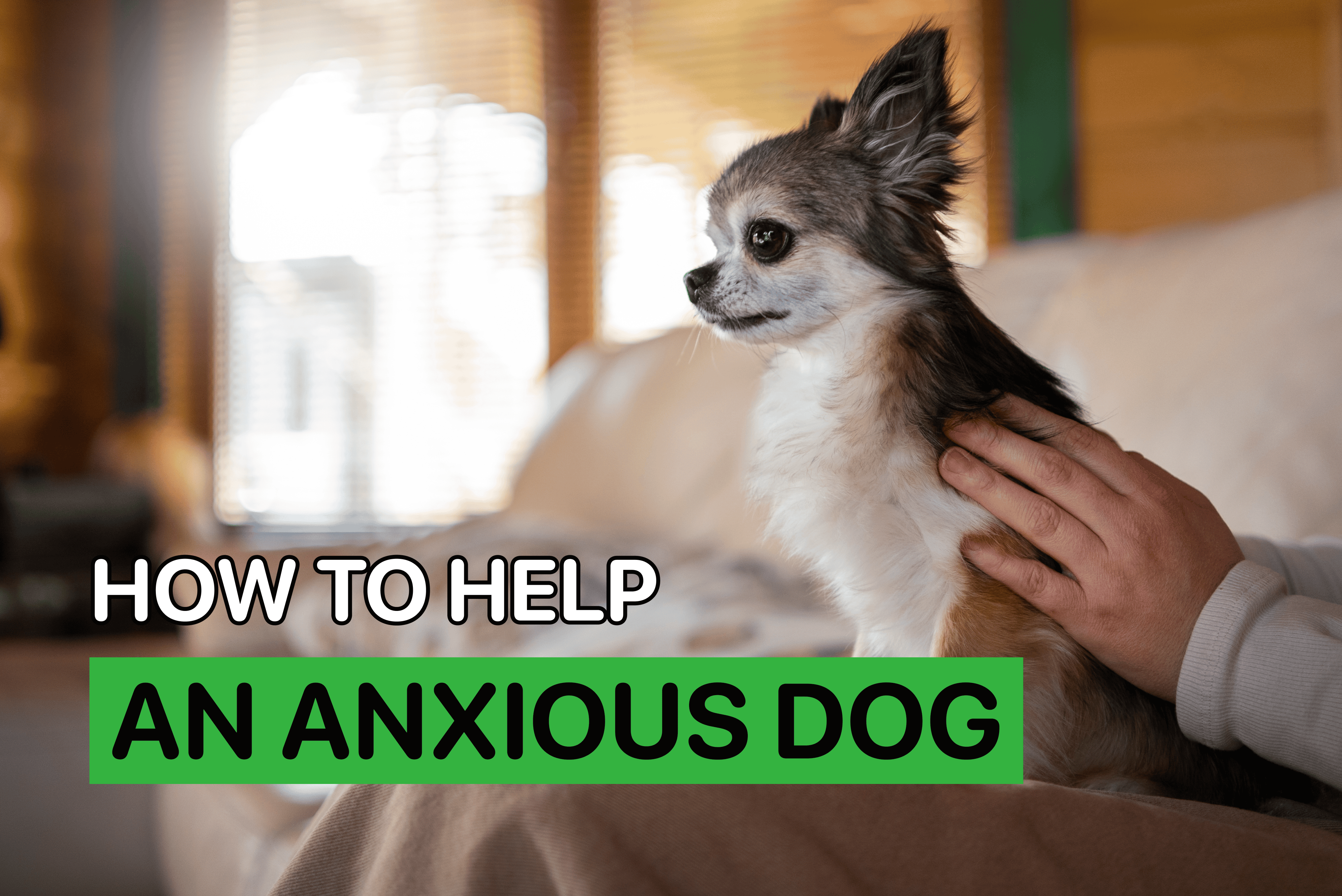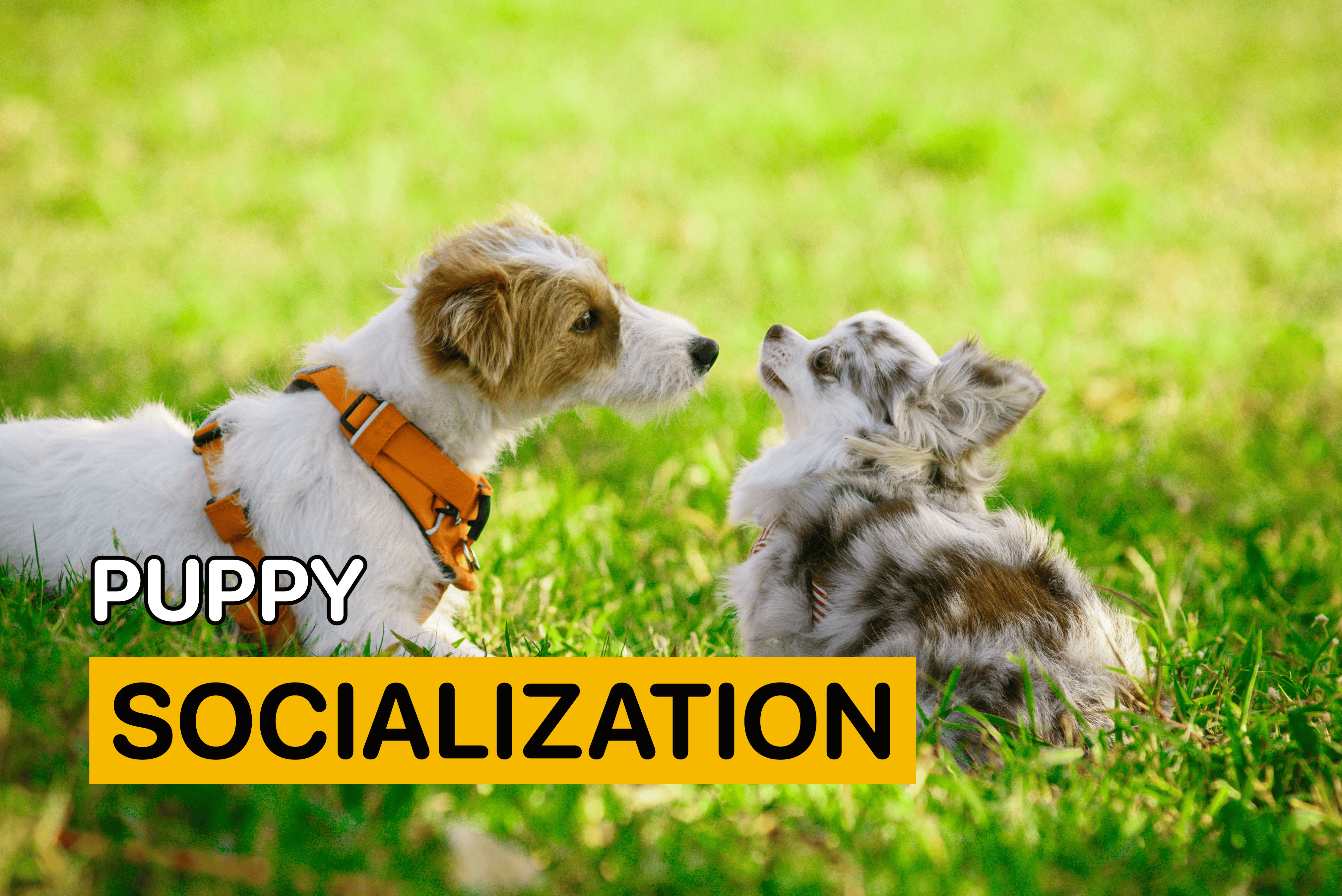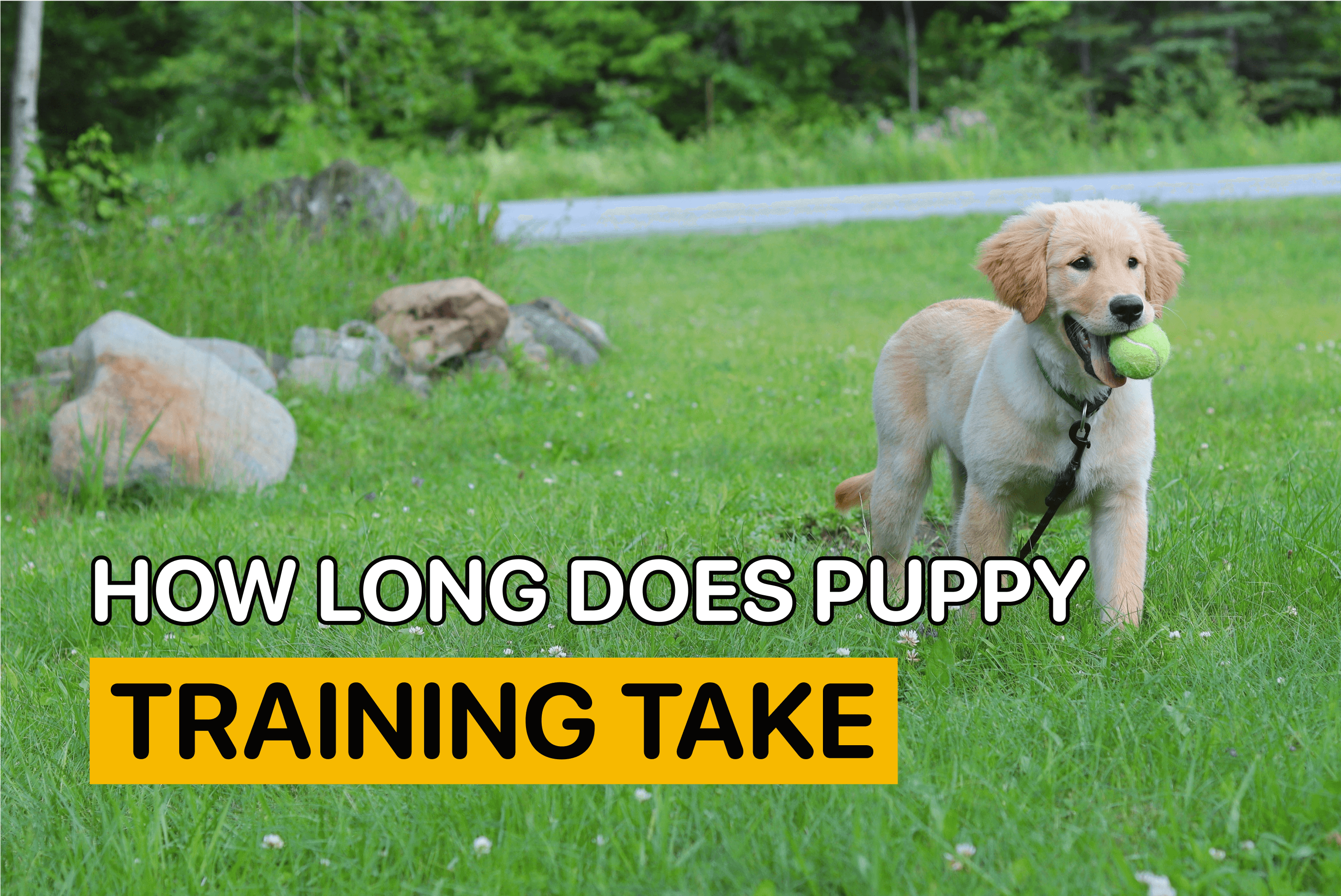Puppy Fear Periods: Expert Tips to Raise a Confident Pup

By
Woofz Team Updated on |Reviewed by Frederica Caneiro
Key Takeaways
-
Fear periods are normal. Puppies usually go through two stages (8–11 weeks and 6–14 months of age), each lasting 2–3 weeks.
-
Watch for signs. Startle responses, avoidance, barking, whining, hiding, and tense body language are common.
-
Don’t force it. Let puppies explore at their own pace; praise curiosity and calm behavior.
-
Reinforce confidence. Pair scary triggers with treats and positive experiences.
-
Adjust training. Keep sessions short, focus on known commands, and manage the environment to prevent them from getting overwhelmed.
Your puppy was happy, curious, and confident yesterday, but today, they’re suddenly spooked by the vacuum, barking at strangers they used to greet, or refusing to walk past a parked bike. Nothing obvious has changed, yet their behavior feels completely different. It’s confusing, even worrying, and you wonder: Is something wrong with my dog?
Apart from some exceptions, that's a normal part of a dog's growth and social development.
Read on to learn what puppy fear periods are and how to guide your dog through them to grow up confident and happy.
What Is a Fear Period in Dogs?
A fear period in dogs is a normal and necessary developmental stage during which a puppy or adolescent dog suddenly becomes afraid of things they were previously comfortable with. The periods take place within the first 1–2 years of a dog’s life.

Fear stages in puppies involve critical reorganizations of the dog's brain, preparing them for increased independence and self-sufficiency. That process heightens their understanding and makes them more sensitive to their surroundings.
From an evolutionary standpoint, fear periods help dogs learn what’s safe and what’s dangerous. Without it, they’d be eating everything in sight and jumping off every cliff – because, well, puppies can be a little crazy.
What behaviours might signal a fear period?
Fear periods can look different from one dog to another, but there are common signs to watch out for:
- Easily startled by sounds or sudden changes
- Dramatic reactions to unpleasant experiences
- Avoidance of people, animals, or unfamiliar objects
- Hiding, freezing in place, or trying to run away
- Barking, growling, or other defensive/aggressive responses
- Whining or excessive panting
- Involuntary urination when scared
- Fearful body language – ears pinned back, tail tucked
- Facial signs of stress, such as a tight grimace or “whale eye” (whites of the eyes showing).
How Long Do Puppy Fear Periods Last?
There are two puppy fear stages during development, each typically lasting 2–3 weeks. However, some dogs may experience several shorter spikes or one longer phase during either the first or second fear period.
First fear period
This stage usually happens around 8–11 weeks of age, often when a puppy is settling into a new home. No surprise, it can feel overwhelming for such a young dog.

To help your new companion adjust and build confidence, create a safe, stable environment. Whenever possible, limit frightening or threatening experiences, or guide your puppy through them slowly with patience and positive reinforcement.
Second fear period
The occurrence of the second fear period in dogs depends on the breed and the amount of early exposure they had with the breeder and later with you.
This stage usually appears between 6 and 14 months of age, and in some dogs, the fear may feel even stronger than during the first period.
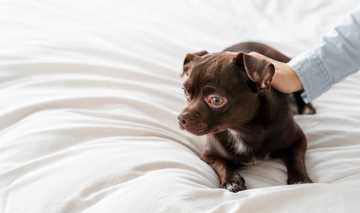
This period can be particularly alarming for owners because their once-confident puppy, now resembling an adult dog, suddenly becomes insecure about familiar environments, toys, and experiences they once cherished. Don’t pressure them into confronting things that scare them. Instead, praise and reward calm behavior – even something as simple as looking at the object they find scary.
Remember, your young dog isn't being defiant or difficult on purpose. They will just need some extra help working through their fears.
How to Help Your Dog Through the Puppy Fear Phase
How you handle your puppy’s fear periods can shape their future temperament. Support them the right way, and you’ll help build a calm, confident dog. Get it wrong, and you risk creating a dog that reacts nervously to everyday situations for life.
Patiently (re)explore the object of fear with them
During a puppy's fearful stage, patience is everything – there are no quick fixes. Stay calm and act naturally to show your puppy there’s nothing to fear.
Never push, drag, or lure them toward what scares them. Instead, give them space and let them decide if, when, and how to approach.

Praise both their curiosity and their decision to retreat, and if they choose to look to you for guidance or help, keep your tone soothing and your body language relaxed. This steady support helps your puppy gain confidence at their own pace.
Use positive reinforcement
Use rewards to help your puppy build new, positive associations with things that scare them. Praise and treat any sign of curiosity – even something as small as looking at the object from a distance. Pair scary triggers with high-value rewards (like bits of chicken) to countercondition fear into something good.
Remember, if your dog refuses food, it usually means they’re too stressed. That’s your signal to add distance or pause the session.
“The more you countercondition slowly, the less stress you’ll all have in the long run – progress in tiny stages, and pair each step with something positive.” — Zan Raynor, Certified Dog Trainer and CEO of ELLAS Animals INC
Expose your puppy to new things in a controlled way
The key is finding the right balance between protection and exposure. Keep socializing them to new environments, people, and friendly animals, but always do it gradually, carefully, and at their own pace.
Handle carefully or avoid obviously stressful situations
Whenever possible, postpone obviously stressful experiences until your puppy is past a fear period. If you can’t avoid them, approach with extra care and use counterconditioning to soften the impact.
Here are some common stressful situations and tips on how to handle them:
-
Arriving at a new home: If your pooch arrives during a fear period, be extra mindful. Minimize exposure to overwhelming new situations. Save introductions to strangers and unfamiliar dogs for later, and make sure your home is puppy-proofed before they arrive. A calm, safe first experience will make a lasting difference.
-
Travel: Many puppies go to new homes at around 8 weeks, which often falls right in the middle of their first fear period. If this is the case, keep the car journey as quiet and calm as possible, with a family member there to reassure your pup and minimize stress.
-
Visiting the vet: Bring treats and let the vet offer them – this can help your puppy build a more positive association.
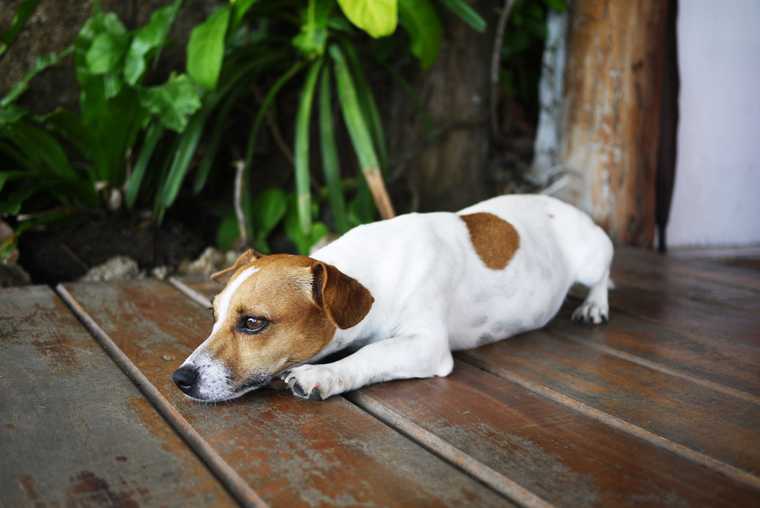
-
Leaving your puppy alone in public (don’t do it during fear periods): Never tie a fearful puppy up unattended – for example, outside a store. Even if they weren’t nervous before, being left alone in a busy place can create lasting fear. Remember, you are your dog’s best advocate, and leaving them tied up removes their sense of safety and control.
-
Training sessions: Always end on a positive note, even if progress was small. Finishing with an easy success and plenty of praise helps your puppy feel confident and eager for the next session.
-
Flooding situations: Avoid overwhelming your puppy by exposing them to too many new experiences all at once or in quick succession. This kind of “flooding” can be especially stressful for young puppies during fear periods and may backfire, creating lasting anxieties instead of building confidence. Introduce new sights, sounds, people, and places gradually, giving your pup time to process each experience at their own pace.
Use management when training stalls
What Certified Dog Trainer Zan Raynor also mentions is that during fear periods in puppies, training may not work as smoothly as before – and that’s okay. This is when management becomes essential. Management means controlling the environment to prevent overwhelming situations:
- Provide a safe space, like a crate, when your puppy needs downtime or can’t be supervised
- Use a leash to guide and limit exposure when necessary
- Avoid triggers by adjusting routines – close car windows, cross the street, or skip environments that may be too stressful.
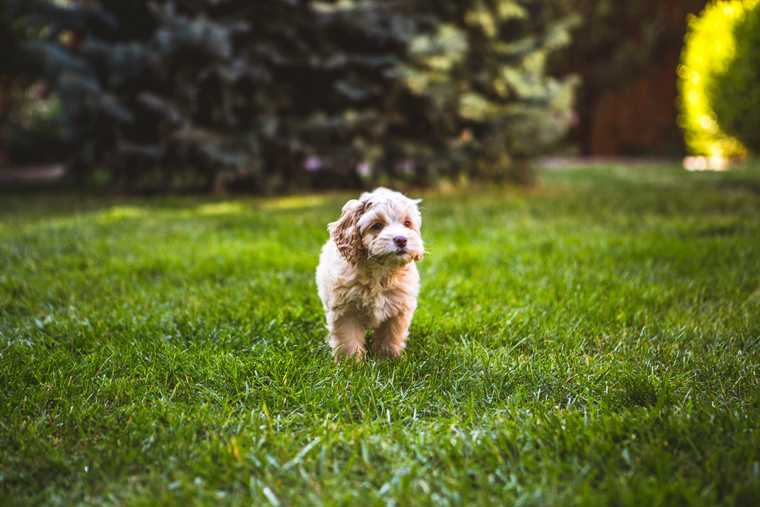
How to Continue Training During the Fear Phase in Dogs?
Training shouldn’t stop during fear periods since consistency matters, but you’ll need to know how to train your puppy during these sensitive weeks.
- Keep it short and positive. 5–10 minutes per session, end with success.
- Review, don’t push. Focus on familiar commands to maintain confidence, rather than adding difficult new ones.
- Work with triggers. Note what spooks your pup. Train at a safe distance, and only move closer if they stay calm and focused.
- Use only positive methods. Reward curiosity and calm behavior. Avoid harsh corrections or overwhelming social situations.
- Be patient and flexible. Every dog develops differently – slow progress now pays off later.
Conclusion
So, as you can see, unexpected weird behavior in puppies is likely a fear period and a normal part of a dog's development. To avoid trauma and raise a confident pup, support your dog, watch for signs of stress, adjust your training, and never force scary encounters.
Important: Don’t misinterpret fear stages in dogs with fear behaviors that may stem from medical issues or trauma. Take your dog to the vet if the fear period lasts longer than three weeks or the fearful behavior continues to worsen.

